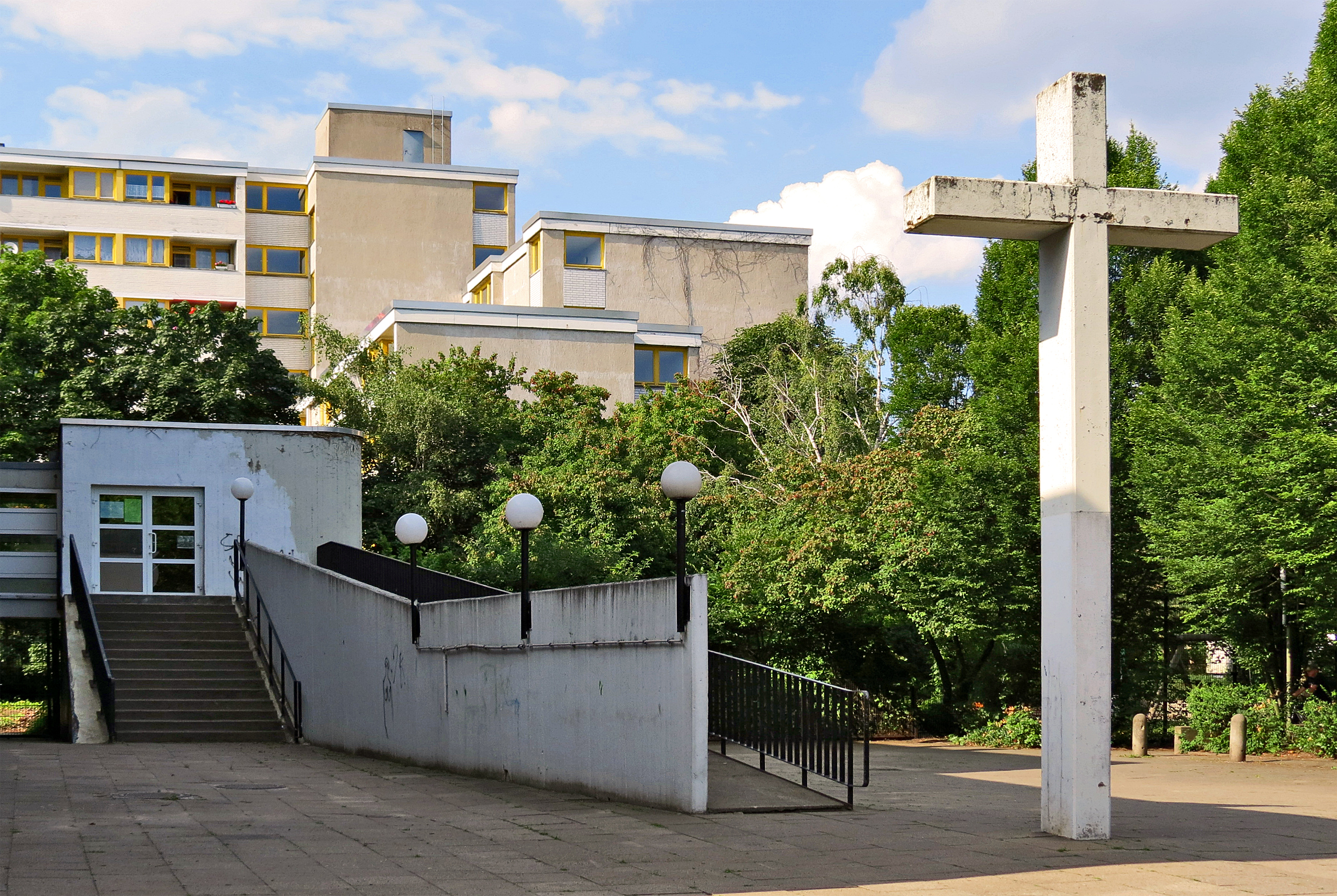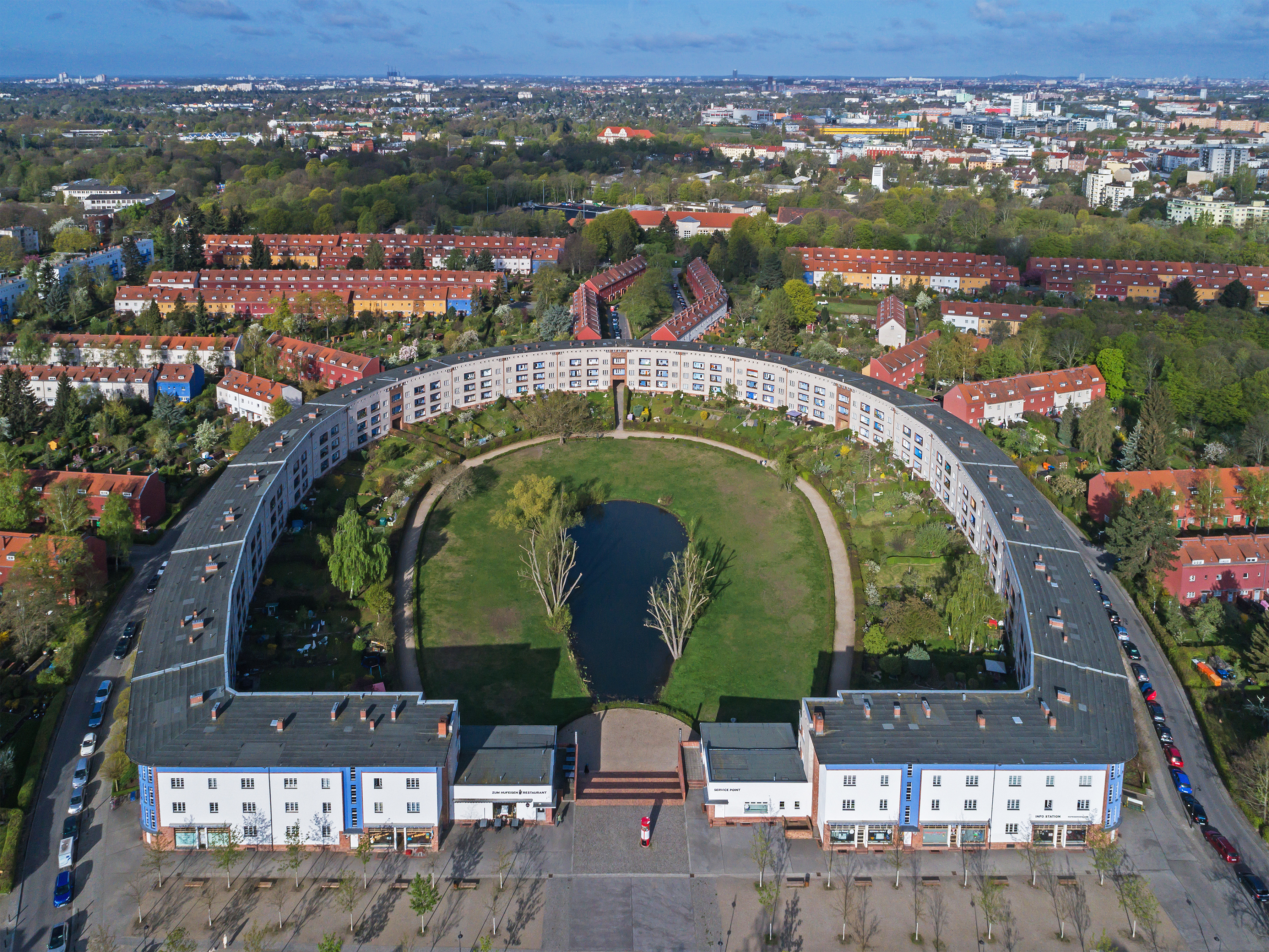|
Charlottenburg-Nord
Charlottenburg-Nord (, literally "Charlottenburg North") is a locality (''Ortsteil'') in the northern part of the Charlottenburg-Wilmersdorf borough of Berlin, Germany. It is chiefly composed of after-war housing estates, allotment gardens and commercial zones. The locality comprises the '' Großsiedlung Siemensstadt'', part of the Berlin Modernism Housing Estates UNESCO World Heritage Site, as well as Plötzensee Prison. Geography Charlottenburg-Nord is situated in the western suburbs of Berlin, beyond the Ringbahn line of the Berlin S-Bahn. In the north the Berlin-Spandau Ship Canal forms the border with Reinickendorf and Tegel, a bridge leading right to the southern entrance of former Berlin Tegel Airport. It further borders with Siemensstadt (part of the Spandau borough) in the west. In the east and south the Berlin-Spandau Ship Canal and the Westhafen Canal mark the border with the inner city localities of Wedding and Moabit (both part of the Mitte borough) and Charlottenbu ... [...More Info...] [...Related Items...] OR: [Wikipedia] [Google] [Baidu] |
Plötzensee Prison
Plötzensee Prison (german: Justizvollzugsanstalt Plötzensee, JVA Plötzensee) is a juvenile prison in the Charlottenburg-Nord locality of Berlin with a capacity for 577 prisoners, operated by the State of Berlin judicial administration. The detention centre established in 1868 has a long history; it became notorious during the Nazi Germany, Nazi era as one of the main sites of capital punishment, where about 3,000 inmates were executed. Famous inmates include East Germany's last communist leader Egon Krenz. History The prison was founded by resolution of the Kingdom of Prussia, Prussian government under King William I, German Emperor, William I and built until 1879 on the estates of the Plötzensee manor, named after nearby Plötzensee (lake), Plötzensee Lake (''Plötze'' is the local German name of the common roach, cf. ''Płoć'' in Polish language, Polish). The area divided by the Berlin-Spandau Ship Canal opened in 1859 was located at the outskirts of the Tegel forest no ... [...More Info...] [...Related Items...] OR: [Wikipedia] [Google] [Baidu] |
Protestant Church Of Plötzensee
The Protestant Church of Plötzensee (German: Gemeindezentrum Plötzensee) is situated in Berlin-Charlottenburg-Nord and was inaugurated in 1970 as the second church building of the Protestant Congregation in North-Charlottenburg within the Evangelical Church of Berlin-Brandenburg-Silesian Upper Lusatia. As it is located close to the former Plötzensee Prison, the church-building was designed as a memorial for the victims of National Socialism. The paintings ''Plötzenseer Totentanz'' (Plötzensee Danse Macabre) painted by the Viennese artist Alfred Hrdlicka are an important part of this church. Building and architecture The church and the church-centre were built in the years between 1968 and 1970 for congregants living in the recently built Paul-Hertz-settlement in this area. The architects Gerd Neumann, Dietmar Grötzebach and Günther Plessow created the buildings, which include a church, a day-care facility for children, a youth centre, apartments, offices and other roo ... [...More Info...] [...Related Items...] OR: [Wikipedia] [Google] [Baidu] |
Charlottenburg-Wilmersdorf
Charlottenburg-Wilmersdorf () is the fourth borough of Berlin, formed in an administrative reform with effect from 1 January 2001, by merging the former boroughs of Charlottenburg and Wilmersdorf. Overview Charlottenburg-Wilmersdorf covers the western city centre of Berlin and the adjacent affluent suburbs. It borders on the Mitte borough in the east, on Tempelhof-Schöneberg in the southeast, Steglitz-Zehlendorf in the south, Spandau in the west and on Reinickendorf in the north. The district includes the inner city localities of Charlottenburg, Wilmersdorf and Halensee. After World War II and the city's division by the Berlin Wall, the area around Kurfürstendamm and Bahnhof Zoo was the centre of former West Berlin, with the Kaiser Wilhelm Memorial Church as its landmark. The Technical University of Berlin (''Technische Universität Berlin''), the Berlin University of the Arts (''Universität der Künste''), the Federal Institute for Risk Assessment (''Bundesinstitut für R ... [...More Info...] [...Related Items...] OR: [Wikipedia] [Google] [Baidu] |
Charlottenburg
Charlottenburg () is a locality of Berlin within the borough of Charlottenburg-Wilmersdorf. Established as a town in 1705 and named after Sophia Charlotte of Hanover, Queen consort of Prussia, it is best known for Charlottenburg Palace, the largest surviving royal palace in Berlin, and the adjacent museums. Charlottenburg was an independent city to the west of Berlin until 1920 when it was incorporated into "Groß-Berlin" (Greater Berlin) and transformed into a borough. In the course of Berlin's 2001 administrative reform it was merged with the former borough of Wilmersdorf becoming a part of a new borough called Charlottenburg-Wilmersdorf. Later, in 2004, the new borough's districts were rearranged, dividing the former borough of Charlottenburg into the localities of Charlottenburg proper, Westend and Charlottenburg-Nord. Geography Charlottenburg is located in Berlin's inner city, west of the Großer Tiergarten park. Its historic core, the former village green of Alt Lietzo ... [...More Info...] [...Related Items...] OR: [Wikipedia] [Google] [Baidu] |
Boroughs And Localities Of Berlin
Berlin is both a city and one of Germany’s federated states ( city state). Since the 2001 administrative reform, it has been made up of twelve districts (german: Bezirke, ), each with its own administrative body. However, unlike the municipalities and counties of other German states, the Berlin districts are not territorial corporations of public law () with autonomous competencies and property, but simple administrative agencies of Berlin's state and city government, the City of Berlin forming a single municipality () since the Greater Berlin Act of 1920. Thus they cannot be equated to US or UK boroughs in the traditional meaning of the term. Each district possesses a district representatives' assembly () directly elected by proportional representation and an administrative body called district board (). The district board, comprising since October 2021 six (until then five) members - a district mayor () as head and five (earlier four) district councillors () - is elected by ... [...More Info...] [...Related Items...] OR: [Wikipedia] [Google] [Baidu] |
Maria Regina Martyrum
Maria Regina Martyrum (german: link=no, Gedenkkirche Maria Regina Martyrum (actually Gedächtniskirche Maria Regina Martyrum der deutschen Katholiken zu Ehren der Blutzeugen für Glaubens- und Gewissensfreiheit in den Jahren 1933–1945) literally in English ''Commemorative church Mary Queen of Martyrs of the German catholics in honor of the martyrs for freedom of faith and conscience in the years 1933-1945'') is a Roman Catholic church of the Roman Catholic Archdiocese of Berlin in Berlin, borough Charlottenburg-Wilmersdorf, in the locality of Charlottenburg-Nord. The church was built on behalf of the German Catholics to honour the Martyrs of Freedom of Belief and Conscience from the years 1933–1945. It is located 20 min of walk from the place of execution of Nazi resistants and opponents within the Plötzensee Prison, now the memorial ''Gedenkstätte Plötzensee''. The church The episcopal ordinariate of the then Roman Catholic Diocese of Berlin commissioned Friedrich Ebe ... [...More Info...] [...Related Items...] OR: [Wikipedia] [Google] [Baidu] |
Siemensstadt
Siemensstadt () is a locality (''Ortsteil'') of Berlin in the district (''Bezirk'') of Spandau. History The locality emerged when the company Siemens & Halske (S & H), one of the predecessors of today's Siemens, bought land in the area, in order to expand production of S & H and their subsidiary Siemens-Schuckertwerke (SSW) as well. On the initiative of Georg Wilhelm von Siemens S & H started to build new factories in 1899. Soon also residential buildings were erected. The locality was incorporated into Berlin on 1 October 1920 by the Greater Berlin Act. Geography Siemensstadt is situated in the eastern side of Spandau district. It borders with Spandau (locality), Haselhorst, Tegel (in Reinickendorf), Charlottenburg-Nord and Westend Westend may refer to: * Westend (Trevilians, Virginia), an historic house in Virginia listed on the NRHP * Westend (Berlin), a locality of Berlin in Germany * Westend (Frankfurt am Main), a borough of Frankfurt am M ... [...More Info...] [...Related Items...] OR: [Wikipedia] [Google] [Baidu] |
Berlin Modernism Housing Estates
Berlin Modernism Housing Estates (german: Siedlungen der Berliner Moderne) is a World Heritage Site designated in 2008, comprising six separate subsidized housing estates in Berlin. Dating mainly from the years of the Weimar Republic (1919–1933), when the city of Berlin was particularly progressive socially, politically and culturally, they are outstanding examples of the building reform movement that contributed to improving housing and living conditions for people with low incomes through innovative approaches to architecture and urban planning. The estates also provide exceptional examples of new urban and architectural typologies, featuring fresh design solutions, as well as technical and aesthetic innovations. Bruno Taut, Martin Wagner and Walter Gropius were among the leading architects of these projects which exercised considerable influence on the development of housing around the world. List of Housing Estates See also *Bauhaus and its Sites in Weimar, Dessau an ... [...More Info...] [...Related Items...] OR: [Wikipedia] [Google] [Baidu] |
Großsiedlung Siemensstadt
The Siemensstadt Settlement (german: Großsiedlung Siemensstadt; also known as ''Ring Settlement'' or ''Ringsiedlung'') is a nonprofit residential community in the Charlottenburg-Wilmersdorf district of Berlin. It is one of the six Modernist Housing Estates in Berlin recognized in July 2008 by UNESCO as a World Heritage Site because of their outstanding modernist architecture and contribution to the progressive housing reform movement during the Weimar Republic. Geography Despite its name, the larger part of the estate is situated within the locality (''Ortsteil'') of Charlottenburg-Nord, only the smaller westernmost part belongs to Siemensstadt in the district of Spandau. History It was built between 1929 and 1931, under the overall master plan of German architect Hans Scharoun. Six prominent Weimar-era architects took part: Hans Scharoun, Fred Forbát, Otto Bartning, Walter Gropius, Paul Rudolph Henning, and Hugo Häring. The nickname ''Ringsiedlung'' came from the asso ... [...More Info...] [...Related Items...] OR: [Wikipedia] [Google] [Baidu] |
Greater Berlin Act
The Greater Berlin Act (german: Groß-Berlin-Gesetz), officially Law Regarding the Creation of the New Municipality of Berlin (german: Gesetz über die Bildung einer neuen Stadtgemeinde Berlin), was a law passed by the Prussian state government in 1920, which greatly expanded the size of the Prussian and German capital of Berlin. History Berlin had been part of the Province of Brandenburg since 1815. On 1 April 1881, the city became Stadtkreis Berlin, a city district separate from Brandenburg. The Greater Berlin Act was passed by the Prussian Parliament on 27 April 1920 and came into effect on 1 October of the same year. The new Prussian province then termed ''Greater Berlin'' acquired territories from the Province of Brandenburg and consisted of the following: * The city of Berlin (''Alt-Berlin''); * 7 towns that surrounded Berlin: Charlottenburg, Köpenick, Lichtenberg, Neukölln/Rixdorf, Schöneberg, Spandau and Wilmersdorf; * 59 rural communities and 27 estate districts ... [...More Info...] [...Related Items...] OR: [Wikipedia] [Google] [Baidu] |
Ecumenical Plötzensee Days
The Ecumenical Plötzensee Days are an annual event, commemorating martyrs and victims of National Socialism. They take place at the catholic commemoration church Maria Regina Martyrum and at the Protestant Church of Plötzensee. The events take place around January 23, Helmuth James Graf von Moltke’s day of death, and January 27, the International Holocaust Remembrance Day. Besides cultural programs as performances of opera, concerts or theater, lectures and vespers are fixed parts in the calendar of events. Clarita von Trott zu Solz, Rosemarie Reichwein (1992), Bishop Albrecht Schönherr (1996), Friedrich-Wilhelm Marquardt (1998), Jizchak Schwersenz (1999), Günter Brakelmann (2009) and Andreas Maislinger have been lecturing or preaching among others. Topics *1992: The Kreisau Circle and its meaning today *1993: Renate Wind: „Dem Rad in die Speichen fallen“ – Dietrich Bonhoeffer *1994: Friedrich Georgi: „Wir haben das Letzte gewagt“; Wörmann: „Widerstand in Char ... [...More Info...] [...Related Items...] OR: [Wikipedia] [Google] [Baidu] |






